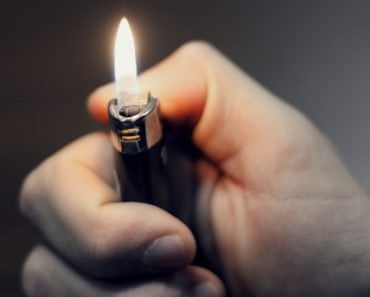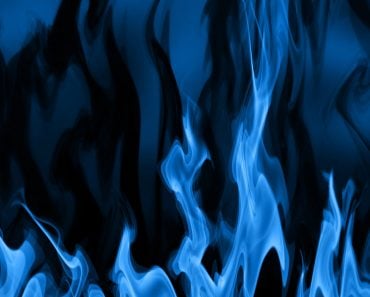Table of Contents (click to expand)
Too tired to read? Listen on Spotify:
It is possible to set farts on fire, but you probably won’t be able to create a full-size flamethrower from your backside.
I remember watching cartoons for hours as a child, and oddly enough, some of the parts I can most vividly remember are where the cartoon characters would set their farts on fire!
Now that I have the expertise to scientifically study this hilarious yet dubious phenomenon, I set out to find out if this is actually possible.
Short answer? Yes, it is. You can set your farts ablaze, but could it be enough to create a flamethrower out of your behind?
Recommended Video for you:
What Are Farts And How Are They Produced?
A fart is nothing but gas produced by the gut that escapes out through the bum. There are four possible reasons for such gas buildups in our bodies.
Air
While eating or drinking, instead of air going down our windpipe, it can go down our food pipe and enter the digestive system. This air will follow the same path as the food we eat after entering our mouths and come out from our butts… as farts!
Blood
Sometimes, gases like oxygen or carbon dioxide that flow in our blood can diffuse into the intestine and gradually build up inside.
Digestive Processes
There are two possible moments where gas may be formed in our body during digestion.
First, when food is being digested by our acidic and enzyme-rich gastric juices, they break down the food to release carbon dioxide. This is because, if we eat any basic food (foods with pH higher than 7), it reacts with our stomach acids to generate carbon dioxide. After all, acids react with carbonates (common additives in bread) to produce carbon dioxide as a byproduct.

Gut Bacteria
Second, bacteria that help to digest our food release gaseous byproducts. This is the part we’re interested in: food + gut bacteria + body heat = flammable gas.
Picture a plate of carbohydrate-rich foods – broccoli, beans and cabbage. A common property of these foods is that they contain tough-to-digest carbohydrates. Our gut doesn’t have the equipment to digest certain complex carbohydrates, but our gut bacteria can.
So, undigested, the complex carbohydrates make their way into the colon, where they are snacked on by gut bacteria. The gut bacteria ferment these sugars and give out two gases in particular that answer our main question – Hydrogen and Methane.
The Different Gases In Farts
Now that we know how farts are formed, we should also know what kind of gases are in our farts. One particular study has detailed the contents of our farts.
Researchers fed participants either baked beans or a fiber-free liquid diet and then collected their farts using rubber tubes that were put inside their bums. After they collected the farts, they identified most of the different gases inside them.
The common gases were found to be carbon dioxide and nitrogen. Other common gases found in the farts were oxygen and sulfur.
FUN FACT: Sulfur is the culprit for stinky farts. Sulfur comes from certain proteins present in the food we eat. So, if you want to avoid having stinky farts, the best thing to do would be to cut down on sulfur-rich foods like broccoli or Brussel sprouts.
They also found that people fart about a liter of gas a day!
Along with these gases are the two gases most responsible for such surprising and potentially embarrassing emissions—hydrogen and methane, which together make up about half the volume of farts.
Flammable Gases
Out of all the gases in our farts, hydrogen, oxygen and methane are the flammable ones. This means they can easily be set on fire.
Flammable gases mix readily with oxygen in the air outside our buttocks and can catch fire easily, even at low temperatures. In fact, one of our fart gases – hydrogen – is so flammable that it is actually used as rocket fuel!
It is important to note that sulfur doesn’t contribute to the fiery nature of farts; it’s mainly the methane that makes farts so easy to set alight.

How Many Farts Does It Take To Light A Fire?
Now that you know your farts flammable, that doesn’t mean you should try letting one rip with a flame near your backside. Trust me, you wouldn’t want to burn your bum.
Even though you produce flammable gases, it isn’t enough to create a flamethrower. Humans can fart anywhere between 25-100 ml at a time. That’s only enough to keep a flame going for a few seconds.
If farts were able to burn any longer, we’d probably be using them to make electricity!
Of course, large quantities of it could help our energy problem, if we could address the large quantity of awkwardness that would come from collecting farts on such a massive scale!
Let’s say that you wished to make a farted-powered flamethrower. The average flamethrower is attached to a 15-20 liter fuel tank. That means you’d have to fart 20 times more than you normally do just to get enough fuel to power up a flamethrower for a minute or two! It could be even less, considering that not all the gases in a fart are flammable.
A woman’s fart once caught fire in the middle of a surgery! During a cervical surgery, gases in her intestine ignited the laser with which the surgery was being performed. This, unfortunately, led to a small flame that caused a little damage!
A Final Word
Plenty of research has focused on understanding how the number and intesity of our farts can vary depending on our diet. It’s quite possible to decrease the amount we fart by eating less gassy food, but I don’t think research has focused on trying to make farts less or more flammable.
While I don’t know if cartoons and movies depict realistic ways of lighting up farts, I can say this for sure – try not to fart too close to an open flame or fire, because YES, farts can light up. Whether or not it’s as easy as it seems in the cartoons, who can say, but I surely don’t intend to try it—and you shouldn’t either!
References (click to expand)
- Tomlin, J., Lowis, C., & Read, N. W. (1991, June 1). Investigation of normal flatus production in healthy volunteers. Gut. BMJ.
- Cashdollar, K. L., A. Zlochower, I., Green, G. M., Thomas, R. A., & Hertzberg, M. (2000, May). Flammability of methane, propane, and hydrogen gases. Journal of Loss Prevention in the Process Industries. Elsevier BV.













